My students continue to complete blog prompts in Edmodo pertaining to my Soil Project. Last month, they had to answer the following prompt: Now that we have sent the dandelions to the Natural Science Museum, what do you expect to get back? What have you learned from this experiment? What do you expect once we receive the data? Please answer using at least three complete sentences.
This is a comment from one of my students: “Now that we have the data, I expect that we would get some type of analysis, on which soil was better, which plant grew the fastest, and how much the
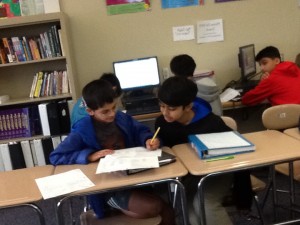 data varied from the different flowers. In this experiment, I have learned that precise measurements are key, and that the controls will never change. I had thought that since the control spot at MPMS was still a dandelion, it would have had to grow in some way. I expect that once we rece
data varied from the different flowers. In this experiment, I have learned that precise measurements are key, and that the controls will never change. I had thought that since the control spot at MPMS was still a dandelion, it would have had to grow in some way. I expect that once we rece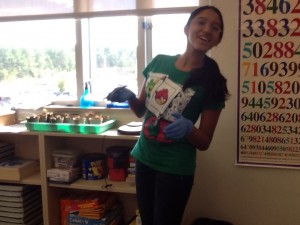
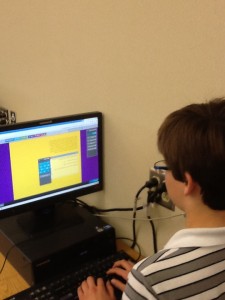
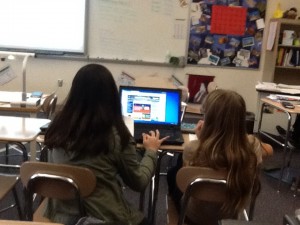 ive the data back, that we will continue to do different measurements. Or, once we have the data back we would have to organize all the data in all of the types of graphs: like histograms, box plots, stem and leaf, and etc.Furthermore, we could have to put the data in the three types of equations. (Slope-intercept, standard form, and point-slope.)”
ive the data back, that we will continue to do different measurements. Or, once we have the data back we would have to organize all the data in all of the types of graphs: like histograms, box plots, stem and leaf, and etc.Furthermore, we could have to put the data in the three types of equations. (Slope-intercept, standard form, and point-slope.)”
Another student wrote this:” I expect that the information we will get back from the Natural Science Museum would be why the dandelions in Amia’s front yard bushes grew so much more than the dandelions in the other soils. I learned that the variation in soils defiantly affected how much the plant grew. Once we get back data on why the soils affected the growth of the dandelions, we can use this information to use the best soil to grow our own plants in the future. By knowing what “ingredients” in the soil helps plants grow, we can use this information to grow taller and stronger plants in the future.”
Another student wrote the following: I expect that when we get back our results, we will notice some bacteria that grew on all different types of dandelion root, no matter what. I think it works kind of like humans. All humans have certain bacteria we NEED to survive, like digestive bacteria, and I believe that there is also a set of bacteria all dandelions need to survive. From this experiment, I learned a lot of things about dandelions. I also learned about how complicated real-life experiments can be.
Once we receive the data, I think that we will have a lot more math to be doing!! 🙂 Also, we will get to be a more active part of the experiment.. AS WE DO MATH!!!! 🙂
Another student wrote this: “I expect that we will get back the results from the tests that the scientists will do on the dandelions. Those results will show how much bacteria has grown on our dandelions. I have learned from this experiment that dandelions have bacteria on them even though we can’t see it. I also learned that the different types of soil and the environment that the dandelion is in, will affect how much bacteria will grow on it. I expect that we will have bacteria on at least one of our dandelions. I know that their is bacteria on at least one of them because based on the experiment that we did (that showed the bacteria on the dandelions), I know that bacteria can be able to grow on dandelions. This is why I expect that the dandelions that we are awaiting the results from, will show bacteria.”
This month, my students will be working on virtual labs for D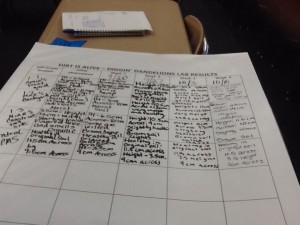 NA extraction, PCR, and gel electrophoresis. Laura, Amy, and I will be meeting with Julia later this month to go over our data. My next unit in my CC 7 Plus class deals with graphs. I am anxious to see what type of data we will receive. Here are some photos of my students in action!
NA extraction, PCR, and gel electrophoresis. Laura, Amy, and I will be meeting with Julia later this month to go over our data. My next unit in my CC 7 Plus class deals with graphs. I am anxious to see what type of data we will receive. Here are some photos of my students in action!